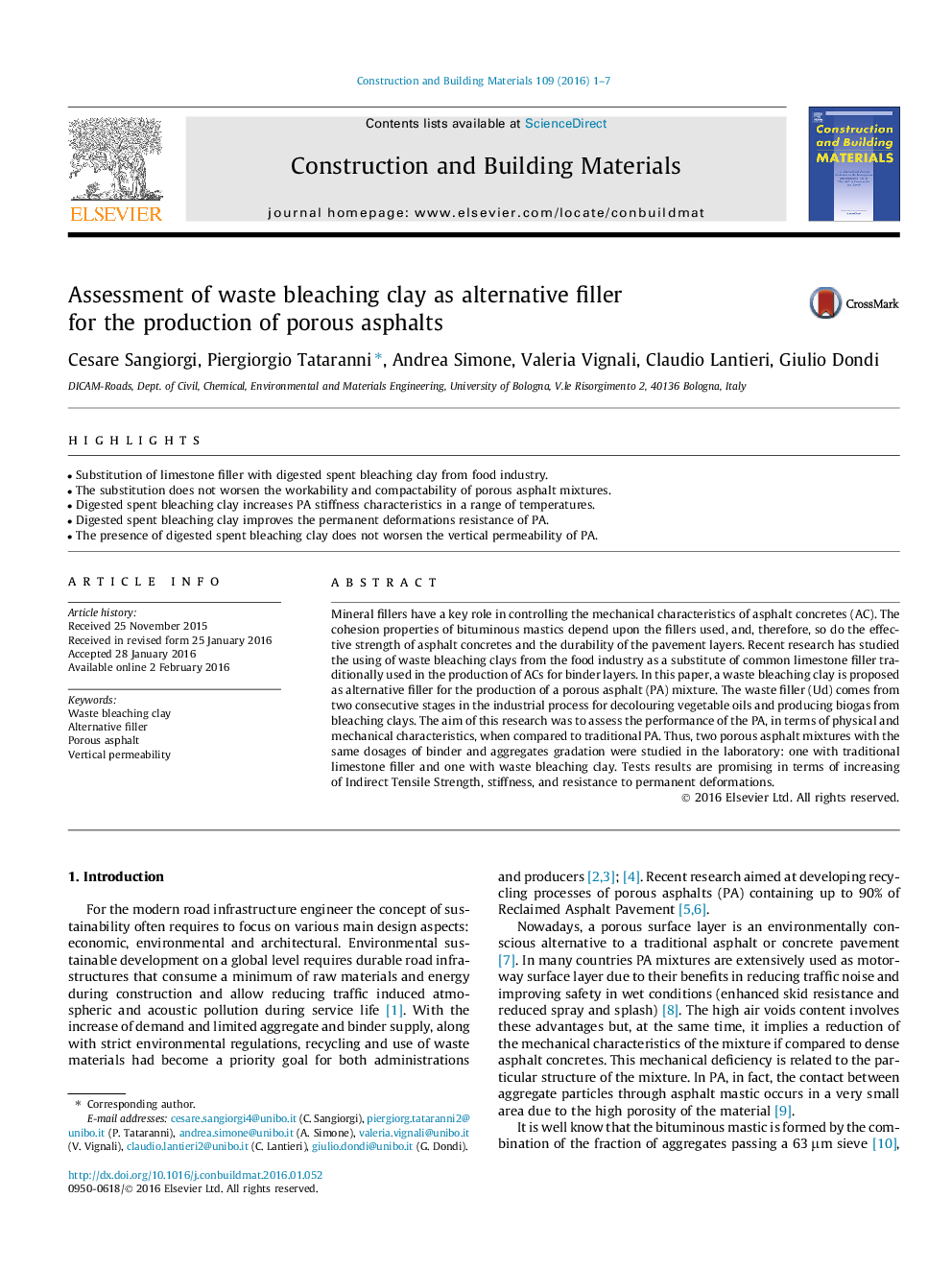| Article ID | Journal | Published Year | Pages | File Type |
|---|---|---|---|---|
| 256269 | Construction and Building Materials | 2016 | 7 Pages |
•Substitution of limestone filler with digested spent bleaching clay from food industry.•The substitution does not worsen the workability and compactability of porous asphalt mixtures.•Digested spent bleaching clay increases PA stiffness characteristics in a range of temperatures.•Digested spent bleaching clay improves the permanent deformations resistance of PA.•The presence of digested spent bleaching clay does not worsen the vertical permeability of PA.
Mineral fillers have a key role in controlling the mechanical characteristics of asphalt concretes (AC). The cohesion properties of bituminous mastics depend upon the fillers used, and, therefore, so do the effective strength of asphalt concretes and the durability of the pavement layers. Recent research has studied the using of waste bleaching clays from the food industry as a substitute of common limestone filler traditionally used in the production of ACs for binder layers. In this paper, a waste bleaching clay is proposed as alternative filler for the production of a porous asphalt (PA) mixture. The waste filler (Ud) comes from two consecutive stages in the industrial process for decolouring vegetable oils and producing biogas from bleaching clays. The aim of this research was to assess the performance of the PA, in terms of physical and mechanical characteristics, when compared to traditional PA. Thus, two porous asphalt mixtures with the same dosages of binder and aggregates gradation were studied in the laboratory: one with traditional limestone filler and one with waste bleaching clay. Tests results are promising in terms of increasing of Indirect Tensile Strength, stiffness, and resistance to permanent deformations.
